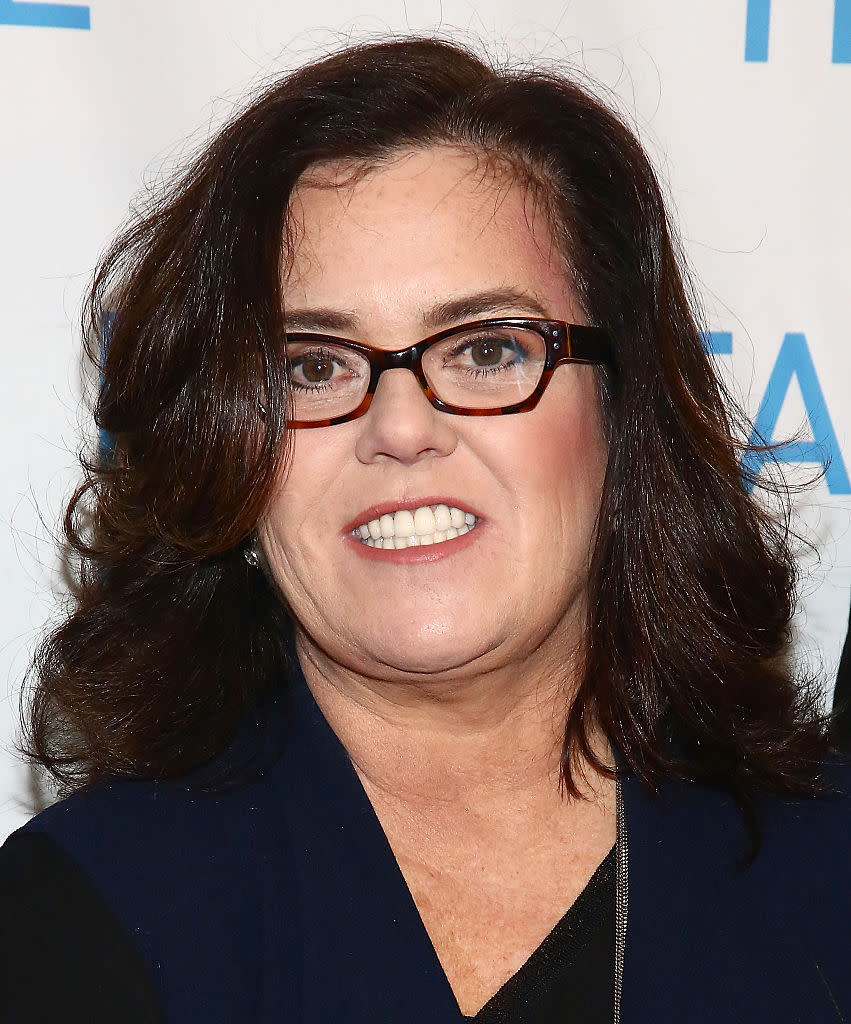Rosie O’Donnell Gets Real About Women’s Hair Loss

Rosie O’Donnell usually usually disguises her her bald spots with good styling. (Photo: Getty Images)
Rosie O’Donnell, who has tweeted and spoken out about everything from her troubled teenager to bitter breakups, is certainly not one to shy away from personal overshares. But on Thursday, the celeb crossed into new territory: her hair loss.
“Male pattern baldness … Aging is fun,” she tweeted, along with a makeup-free selfie in which she is cringing as she points out apparent bald spots on her head, which sports a messy bun.
male pattern baldness … aging is fun pic.twitter.com/OMuanTCdTL
— Rosie (@Rosie) May 5, 2016
The brave exposure prompted a flood of likes and empathetic comments — some of which offered advice (take biotin and vitamins, check your thyroid, stop pulling your hair back so much) — but many were from women who are having a similar experience. “That’s mild compared to mine,” noted one. “I feel your pain RO. That’s how my scalp looks!” came from another, as did, “I think we are about the same age and I am fighting the same battle.” And, finally: “Women losing hair doesn’t get same attention, but hair loss is not confined to men.”
That’s true, as women make up about 40 percent of American hair-loss sufferers, according to the American Hair Loss Association. So why don’t we hear more about it?
“There is still some degree of stigma attached to women’s hair loss,” Lars Skjoth, founder and head scientist behind Harklinikken, a Danish hair-loss treatment clinic that recently entered the U.S. market, tells Yahoo Beauty. “[Rosie’s] post is helpful the way it’s done. It tells a lot and is open about the subject. Because female hair loss is more common than we think.”
In fact, Skjoth says, if you were to put 100 women between the ages of 30 and 60 in a room, “more than half would have fairly visible signs of thinning,” which is “about the same” as with men. But one of the main reasons we don’t talk about it much — besides the stigma — is that it’s easier for women to style their hair in a way that hides their bald spots. That’s mainly because women’s hair loss often occurs in different patterns from men’s — sporadically, with thinning behind the hairline (so it can be hidden), and with hair first becoming limp, lifeless, and brittle. Men, on the other hand, tend to bald more neatly, at the temples and crown of the head.
And while women’s hair thinning is sometimes caused by pulling it back into very tight ponytails and braids — creating sometimes irreversible “traction alopecia” by the bleeding that’s prompted within the hair follicles — the primary cause, Skjoth explains, is hereditary.
In order to have the best chance at reversing hair loss, it’s helpful for women to pay attention to early signs. “One is that you notice you can suddenly get the elastic band around your ponytail many more times,” Skjoth says, as are signs of brittle hair, a more visible scalp, and what looks like hair breakage but could actually be “miniaturizing,” or thinning.
Individuals need to be evaluated to see if they are good candidates for treatment (take note, Rosie), including Skjoth’s, which involves the application of customized extracts to both stimulate growth and improve the texture and fullness of strands that already exist. And to stop hair loss to begin with, he suggests sticking to the following measures: Don’t pull your hair back too tightly or wear extensions; thoroughly wash your scalp every other day (not once a week!) to get rid of product buildup; and, finally, “Get enough sleep. This can reverse a lot of stress in the body.” Amen to that.


